All that jazz: Berlin wall artist Thierry Noir celebrates the symbiotic relationship between art and music
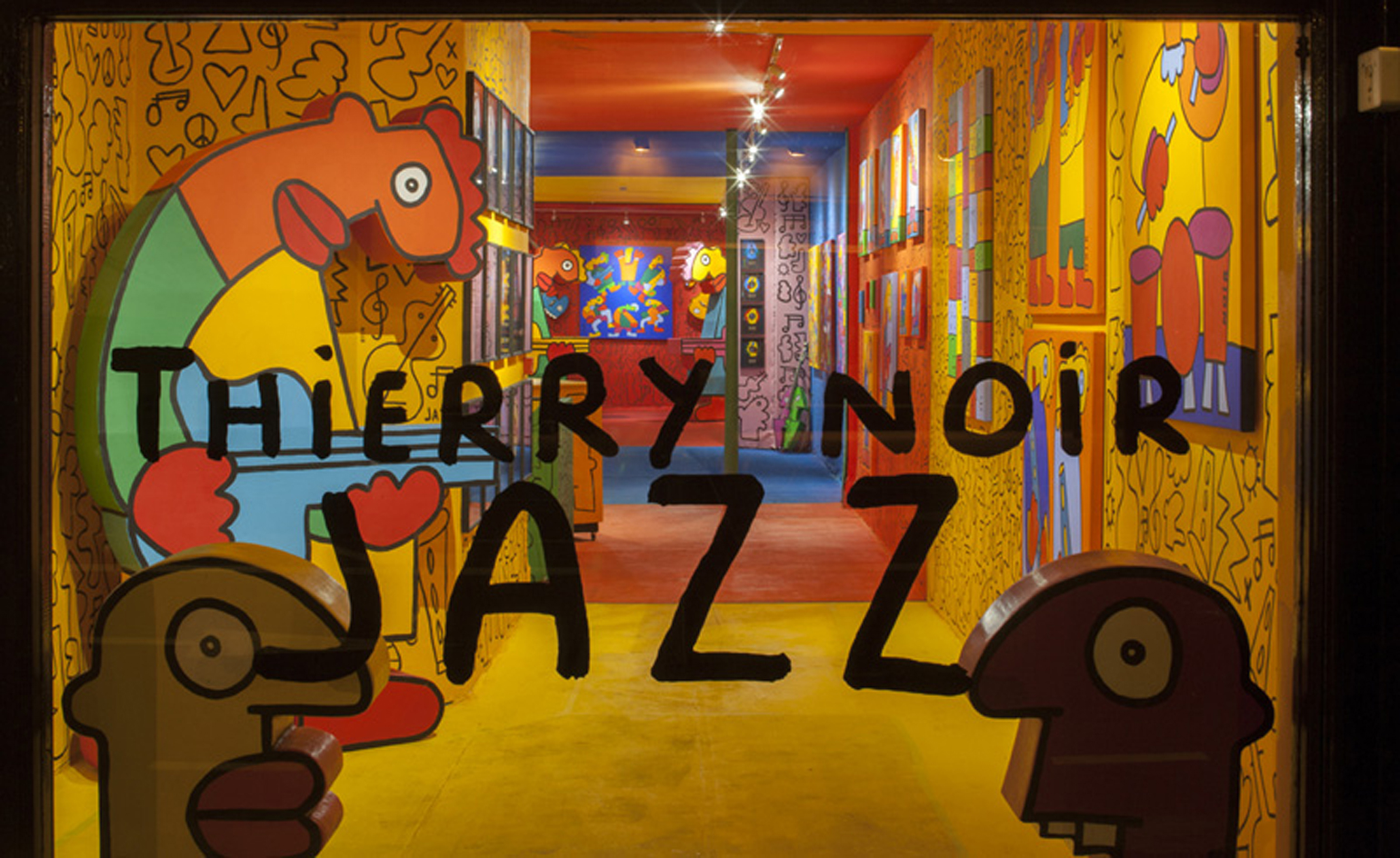
When Thierry Noir finished painting the walls of London's Howard Griffin Gallery for his latest exhibition, 'Jazz' – a show which explores the synthesis between art and music – there wasn’t an inch of space that wasn’t drenched in colour or alive with pattern; full of speed, movement and discordance, just like a visualisation of the jazz music that inspired it.
Of course, an immersion in the expressive nuances of complex and fringe musical forms is nothing new for Noir. In the 1980s, the French street artist was part of a community of artists, musicians and free thinkers that also included David Bowie and Iggy Pop, who moved into West Berlin and were hugely influenced by its alternative music scene – from new wave and hip hop, to punk rock and jazz.
Through his distinctive, spontaneously painted characters, Noir became a forefather to the modern street art movement; most notably as one of the first artists to use the Berlin Wall as a canvas for his art in 1984, fragments of which can now be found in Berlin's East Side Gallery and in a New York City courtyard.
Since those early days, Noir has remained in Berlin, where his love affair with music continues. 'If I had not been an artist, I would have been a musician,' he notes. It is this inextricable bond between music and art that is the focus of his solo exhibition at Howard Griffin.
Here, brandishing musical instruments, his distinctive characters are painted in lurid, clashing colours upon canvases, on sculptural works and across the walls. Moving into 3D forms, Noir has worked with sculptor Chris Tsonias to create a series of playable musical instruments inspired by Noir's imagery that will complete the sensory experience. In the past, Noir has often referred to himself as 'the Picasso of the street' – a comparison that is perfectly clear to see here.

The show explores the inextricable link between music and art in Noir's work
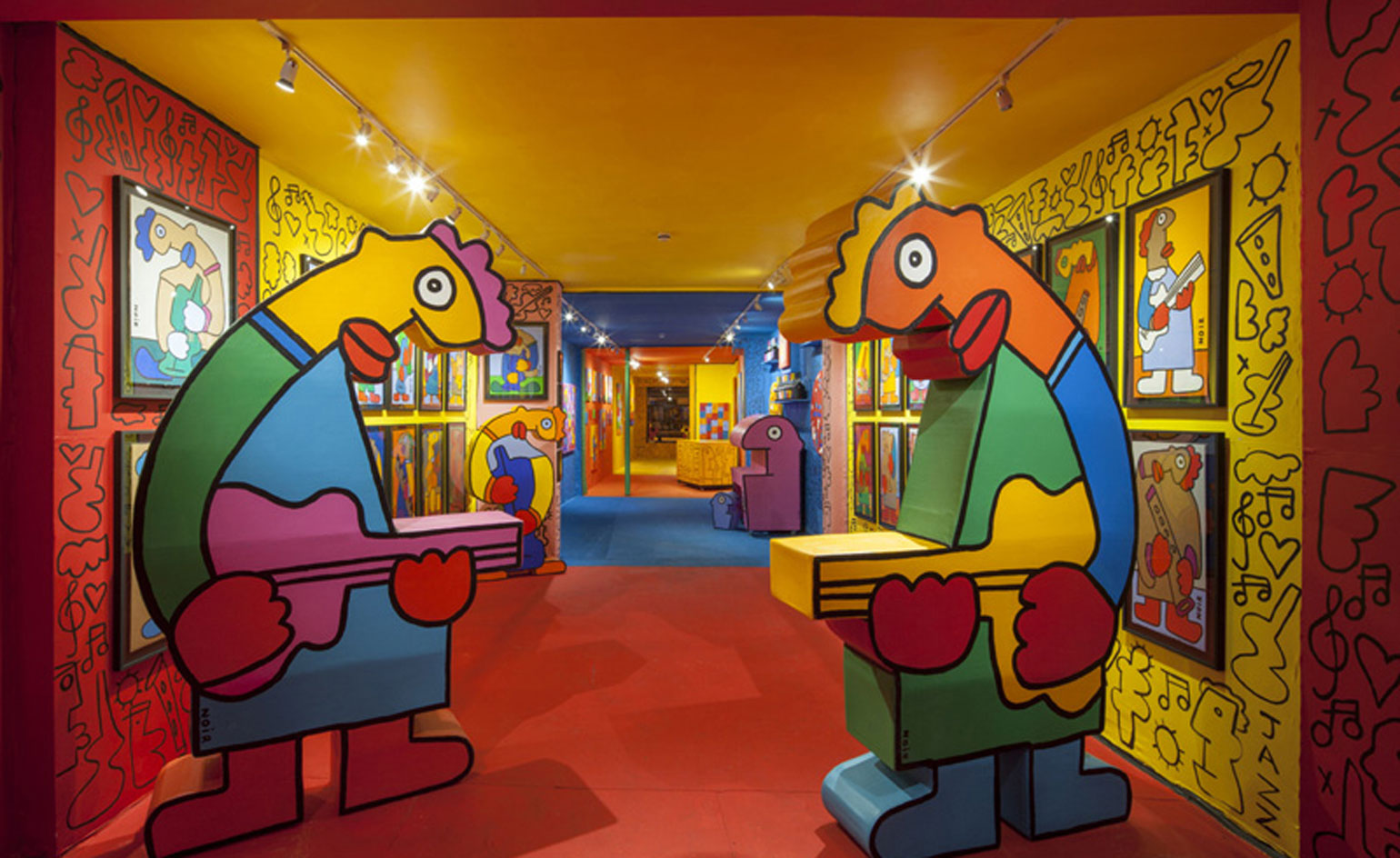
Noir, who moved to West Berlin in the 1980s, has been hugely influenced by its alternative music scene throughout his career
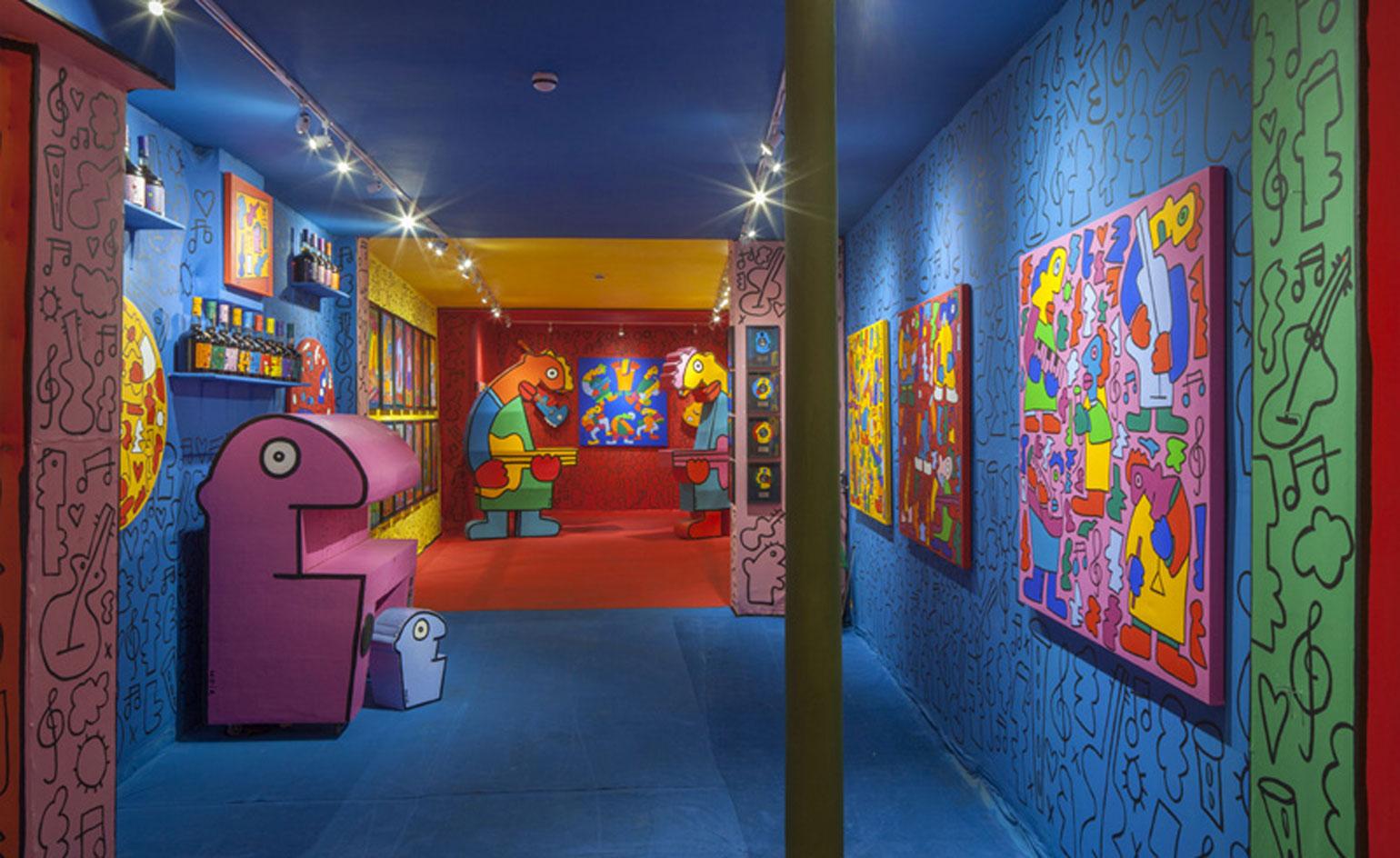
In 'Jazz', the distinctive characters for which Noir is reknowned are equipped with musical instruments and painted in the artist's trademark clashing colours upon canvases, on sculptural works and across the walls
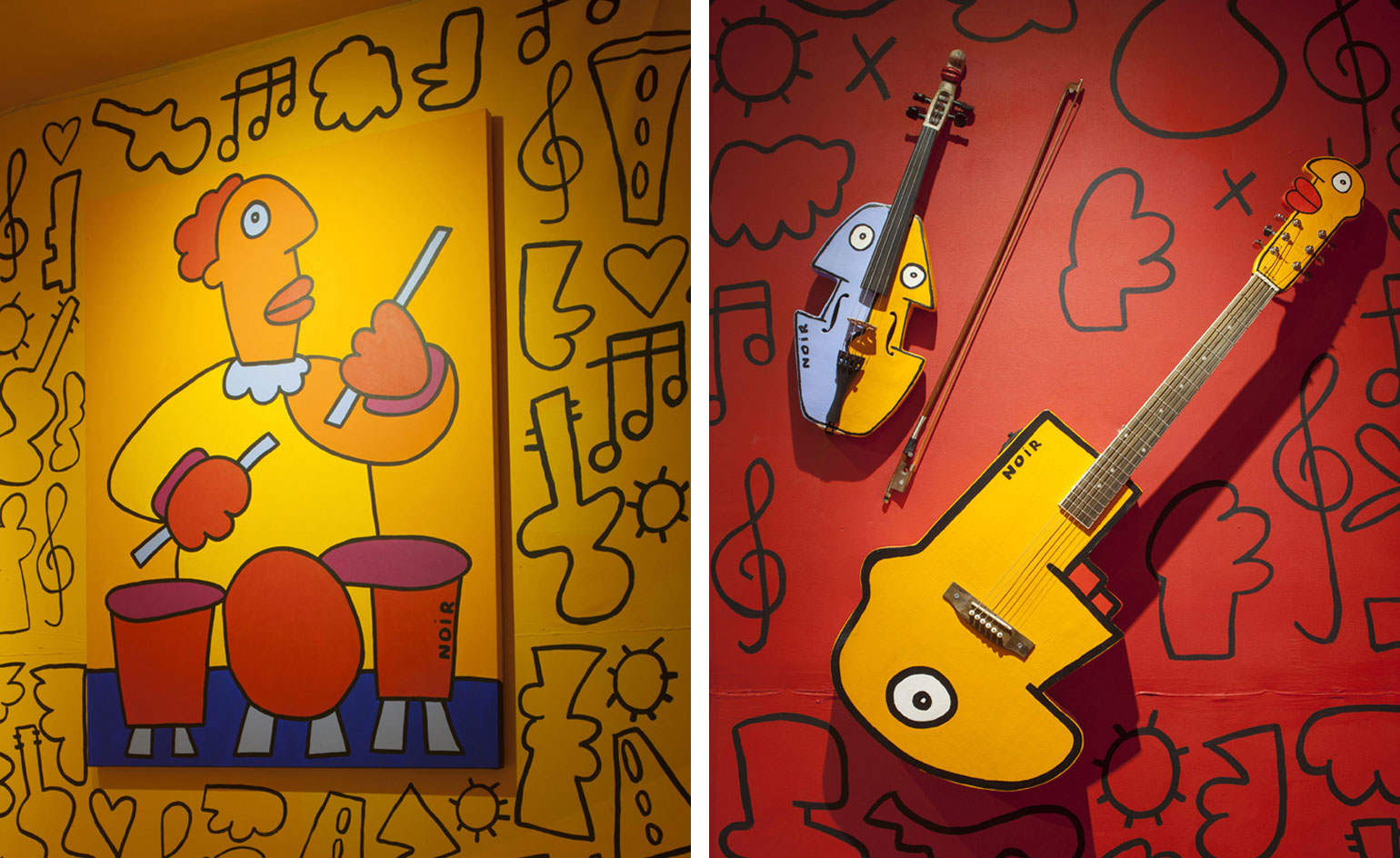
In addition to the canvases and wall murals, Noir has has worked with sculptor Chris Tsonias to create a series of playable musical instruments

In the past, Noir has often referred to himself as 'the Picasso of the street' – a comparison that is clear to see here
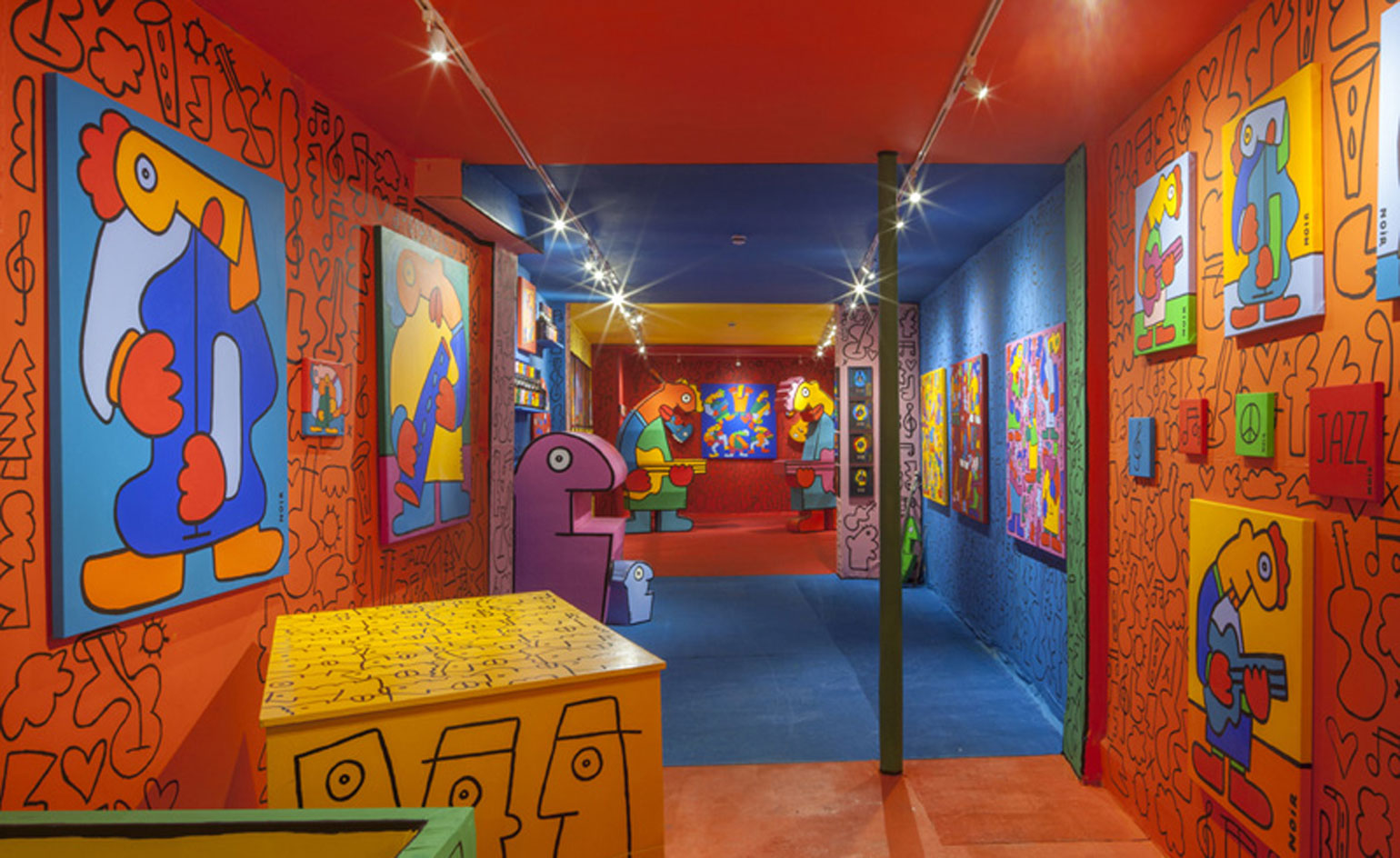
Noir has remained in Berlin, where his love affair with music continues. 'If I had not been an artist, I would have been a musician,' he explains
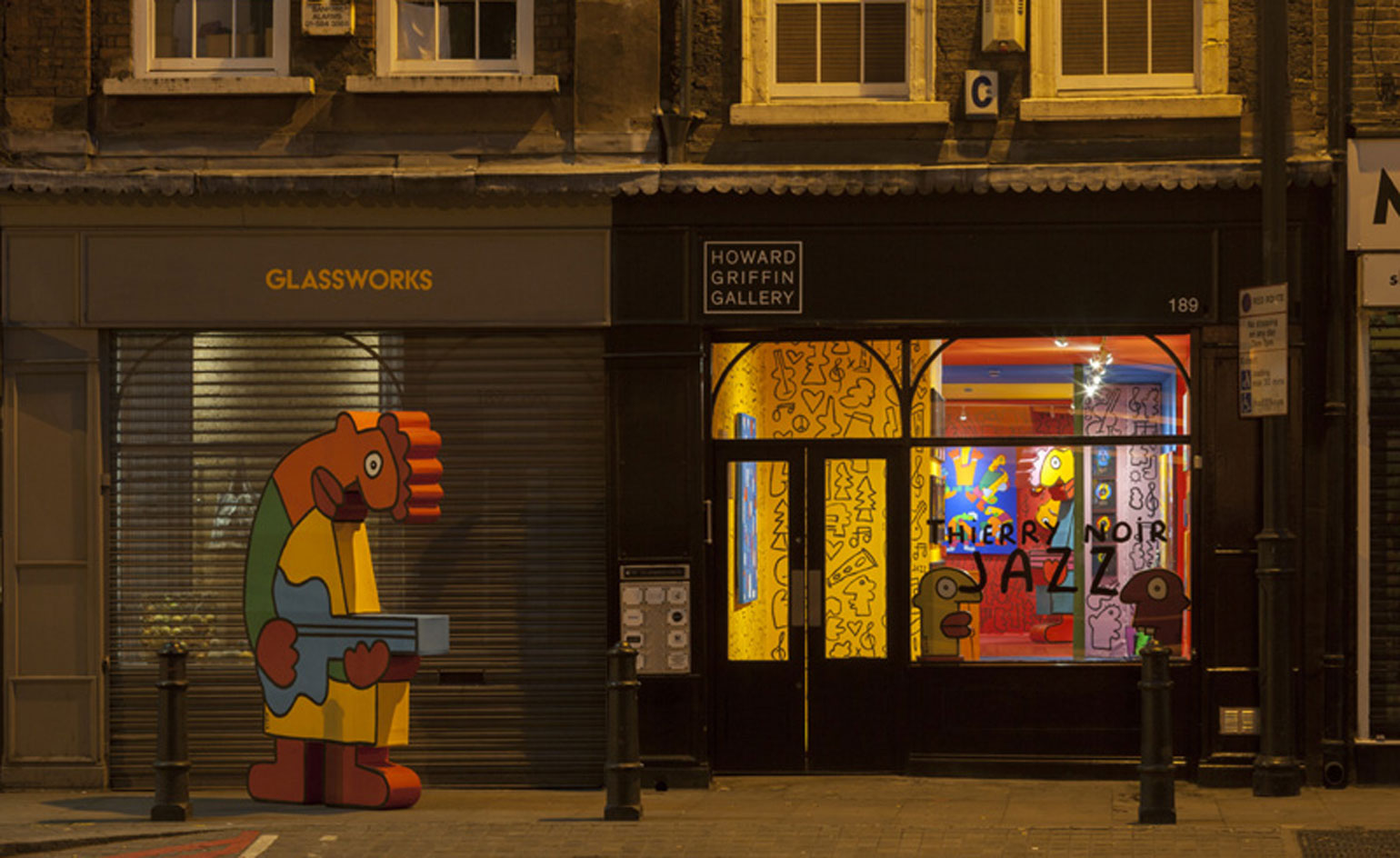
Through his distinctive, spontaneously painted characters, Noir became a forefather to the modern street art movement
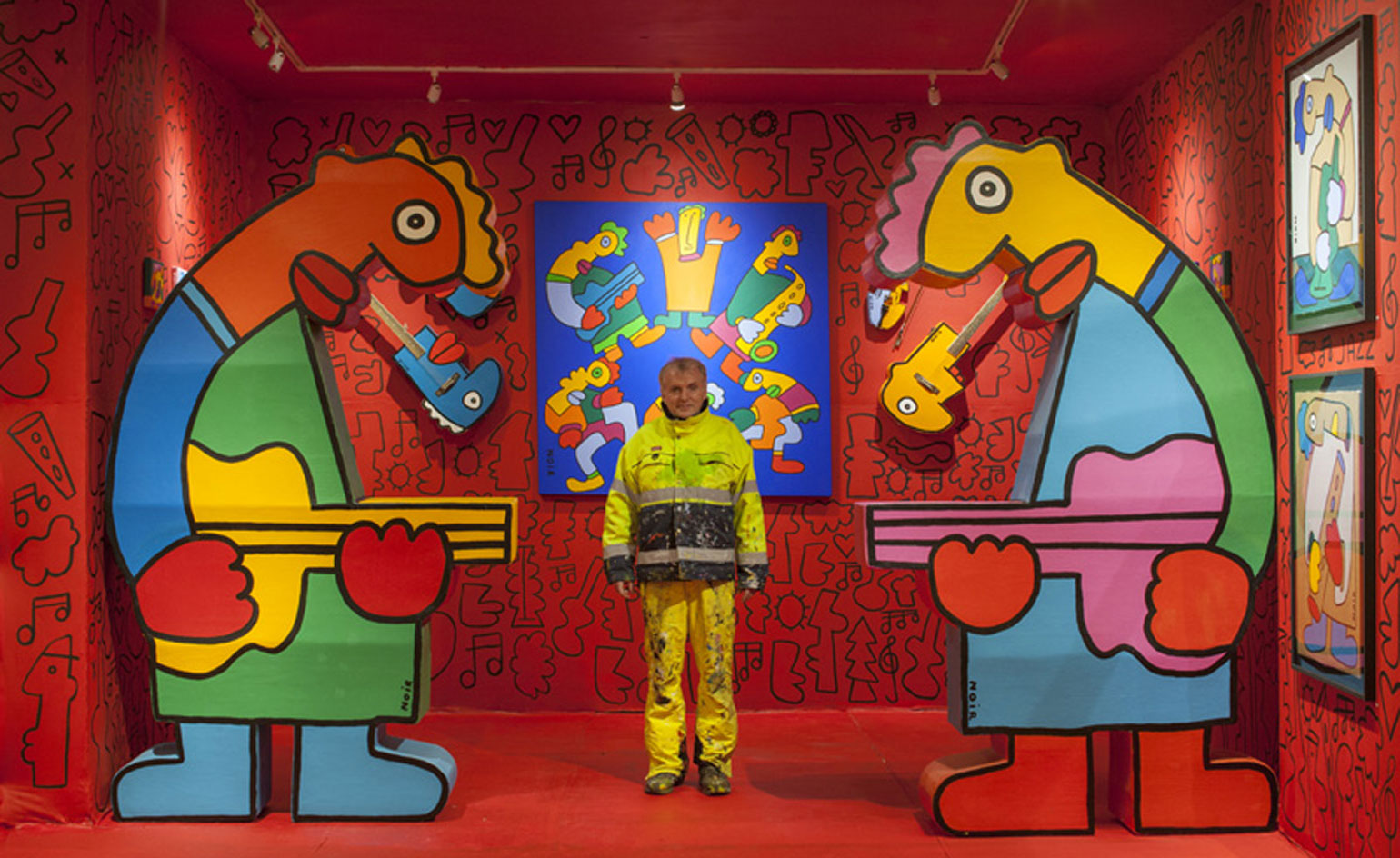
Noir was one of the first artists to use the Berlin wall as a canvas for his art in 1984 – fragments of which can now be found in the city's East Side Gallery and in a New York City courtyard
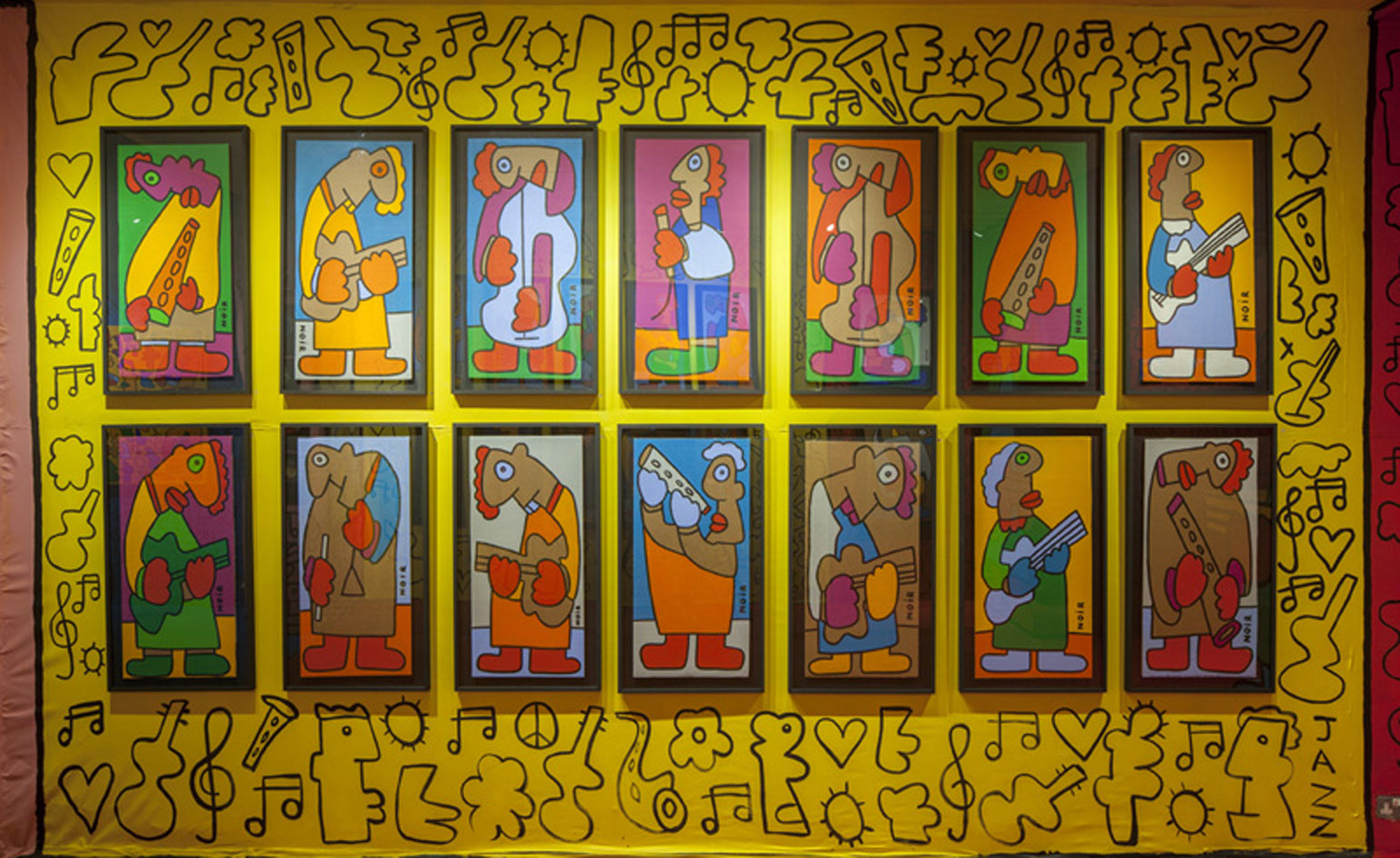
Irish rock band U2 also used Noir's artwork to decorate their 1991 album Achtung Baby
ADDRESS
Howard Griffin Gallery
189 Shoreditch High Street
London, E1 6HU
Wallpaper* Newsletter
Receive our daily digest of inspiration, escapism and design stories from around the world direct to your inbox.
Ali Morris is a UK-based editor, writer and creative consultant specialising in design, interiors and architecture. In her 16 years as a design writer, Ali has travelled the world, crafting articles about creative projects, products, places and people for titles such as Dezeen, Wallpaper* and Kinfolk.
-
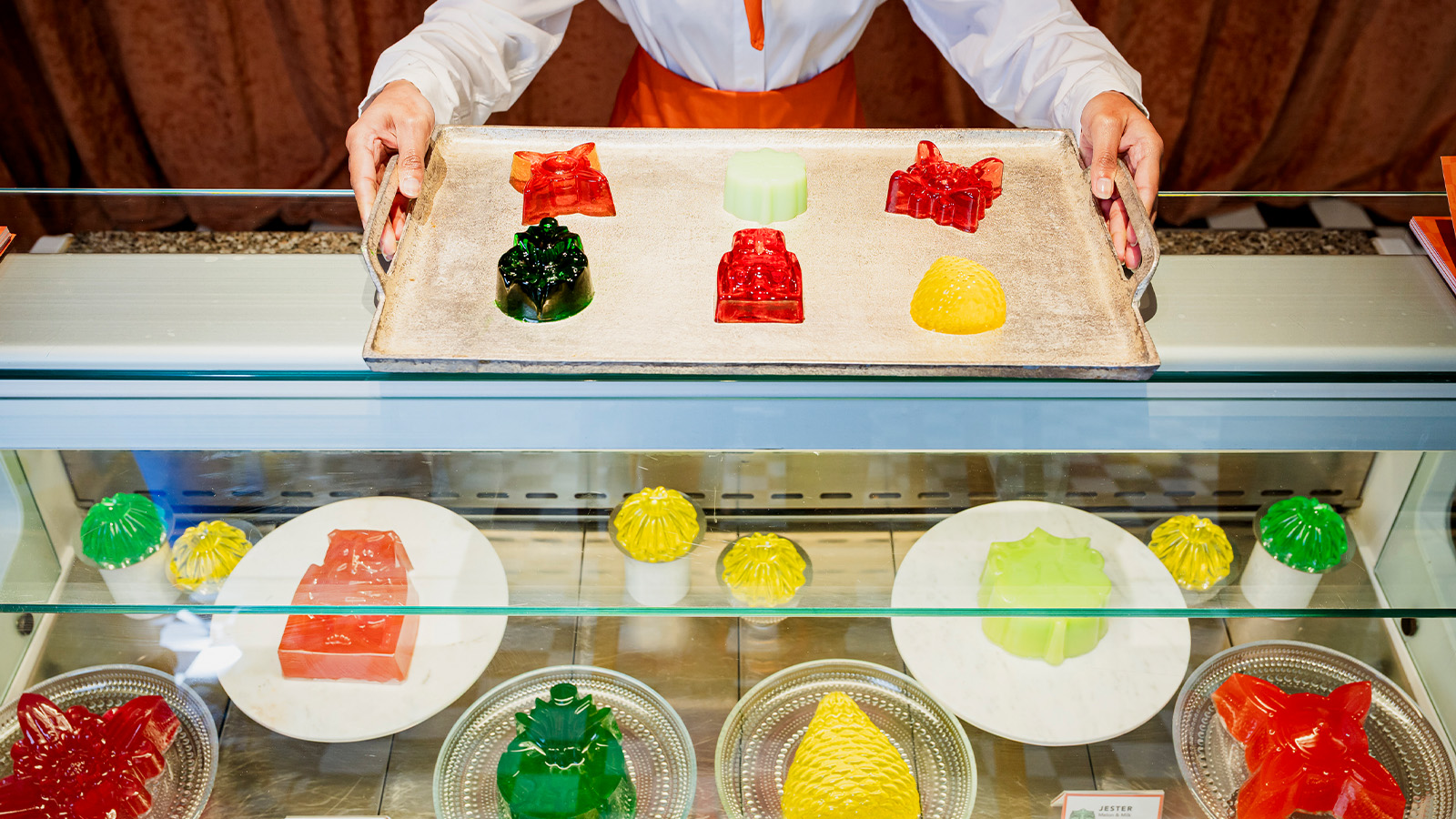 At the Regent Street Sensorium, architectural jelly sculptures are designed to ignite the senses
At the Regent Street Sensorium, architectural jelly sculptures are designed to ignite the sensesDelve into the history of London’s Regent Street through a jellyscape, a fragrance cloud and more – plus, for the event’s final week, two new immersive workshops (ends 27 April)
By Tianna Williams
-
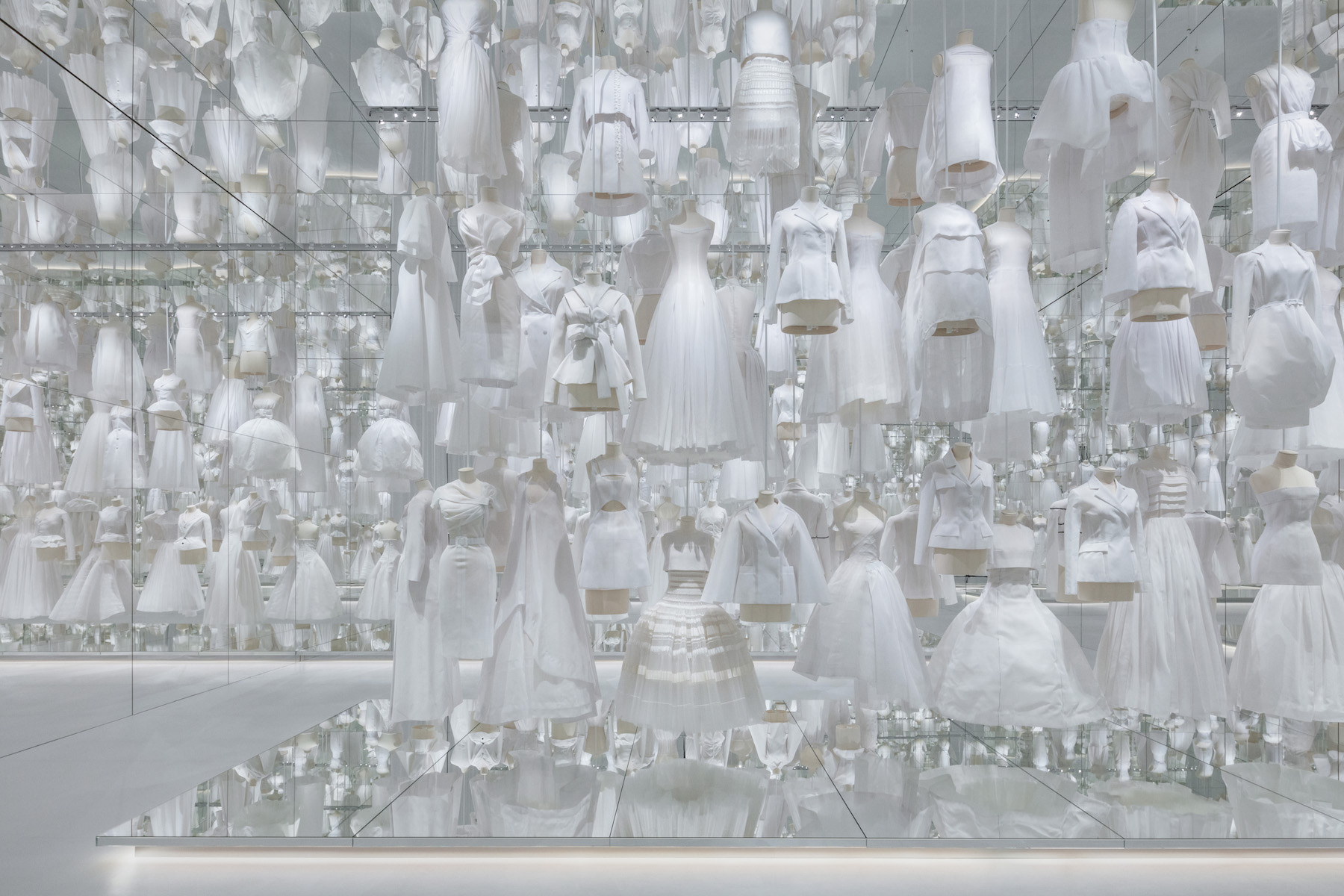 With scenography by OMA, Dior’s ‘Designer of Dreams’ exhibition in Seoul is ‘a piece of theatre’
With scenography by OMA, Dior’s ‘Designer of Dreams’ exhibition in Seoul is ‘a piece of theatre’OMA partner Shohei Shigematsu catches up with Wallpaper* about the dramatic show design for the latest iteration of ‘Christian Dior: Designer of Dreams’, which opened in Seoul this weekend
By Daven Wu
-
 Mercedes-Benz previews its next-gen people mover with an ultra-luxury EV concept
Mercedes-Benz previews its next-gen people mover with an ultra-luxury EV conceptThe Mercedes-Benz Vision V Concept is an art deco picture palace on wheels, designed to immerse passengers in parallel worlds as they travel
By Jonathan Bell